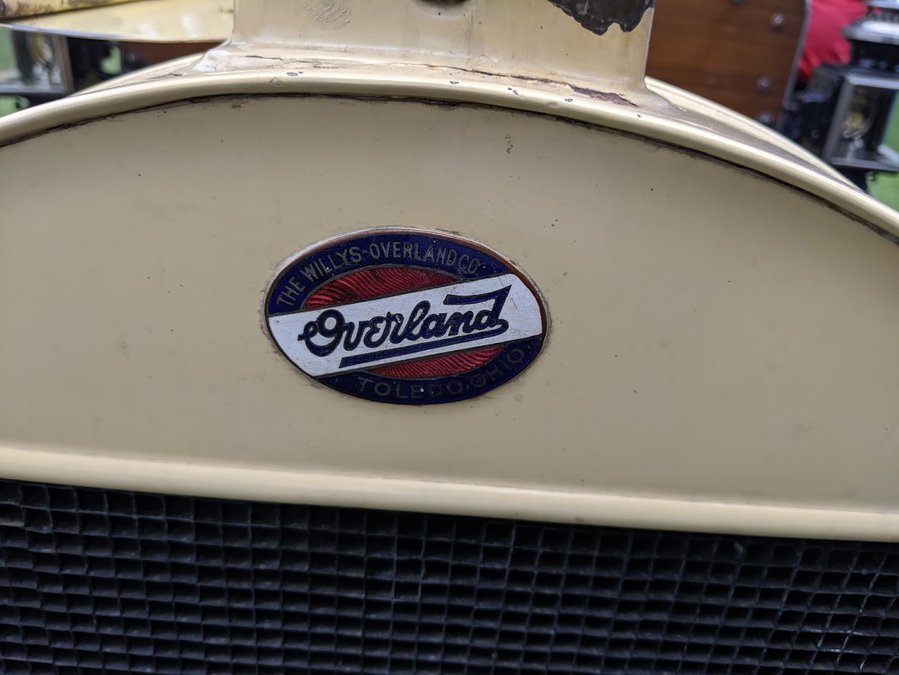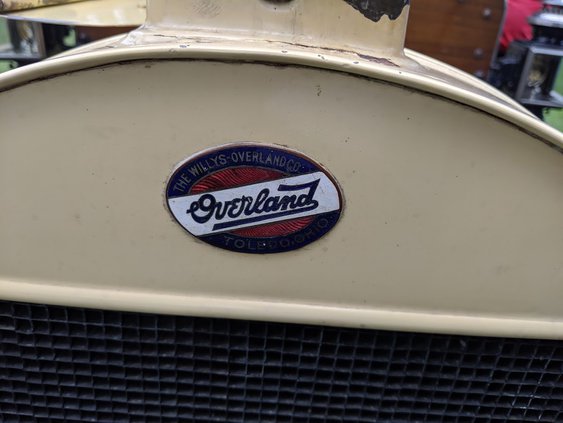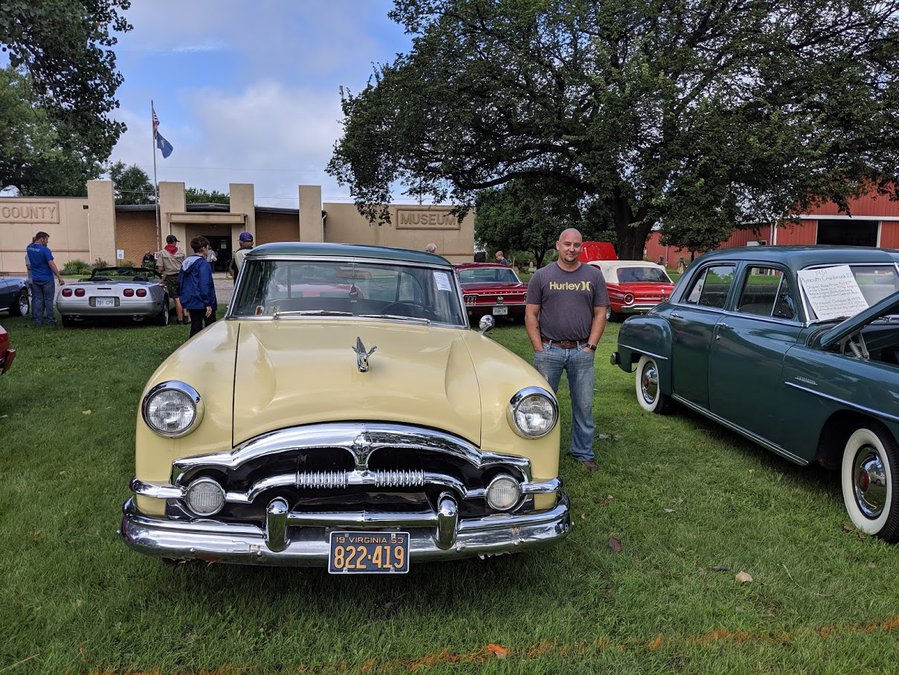

Early morning rain wasn’t enough to keep car enthusiasts away from the Barton County Historical Society Village’s annual Rolling Sculpture Car Show Saturday morning. The light rain let up shortly after the posted start time of 10 a.m., as visitors strolled among the vintage and classic cars appreciating the details of workmanship from decades ago, and hearing the stories of painstaking renovation projects from their proud owners.
One of the oldest vehicles at the show that day was a true “horseless carriage,” owned by John Vsetecka, Great Bend. His 1913 Willy’s Overland is the oldest of six vintage cars in his collection. When he set out to find it, he was particular about what he was looking for. As a member of a horseless carriage car club, he wanted a car that truly fit the category, and that meant it had to be a 1915 model or older. His 1917 Stanley Steamer was too new.
He scoured the pages of Hemmings Motor News and eventually found the 1913 Overland, complete with right-hand steering, acetylene headlamps and kerosene lanterns. A unique tank lays on its side along the driver’s side running board. It contains a small amount of acetylene. When Vsetecka operates his head lamps, which he doesn’t do very often, he admits, he needs to open the glass on the lamps, then turn on the gas, then return to the lamps to light them.
Details making the car true to period include the 1913 license plate, the first year they were issued in the State of Kansas. Prior to that, they were made of leather, and put together in true do-it-yourself style.
“You could order a kit, or you could get a leather blank and then you put your own numbers on it,” he said. “They were usually issued by cities instead of the state until they started statewide registration in 1913.”


Another unique car, a 1953 Packard was found and restored by David Burgess with Murphy Tractor and Equipment. He was back in Virginia in 2012 when he by chance spotted the Packer’s headlights peeking out from a row of trees along a rural road near Rocky Mount, Va. He stopped and visited with the property owner who shared that the car’s fuel pump had gone out many years before. It sat in storage in the owner’s basement for 20 years, then it was moved to the tree line outside where it continued to sit until Burgess inquired about it. A price was agreed upon, and he transported it home where he went to work on the renovation.
Since then, he’s transformed the rusted out Packer, painting it the original Carolina Cream with Galahad Green accents with a dark green interior.
The car remained behind in Virginia until recently. Burgess’s son wanted to drive his prom date to the prom in the Packard, so father and son transported it back to Kansas. Sadly, when the big day came, the starter went out, so he was unable to use it for prom transportation. Burgess was pleased to have it in running condition for this year’s Rolling Sculpture event.
In addition to the cars on display, the museum and grounds were open to the public throughout the day free of charge.





